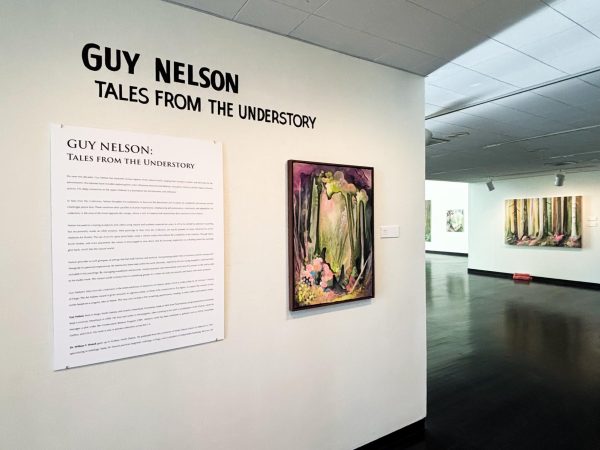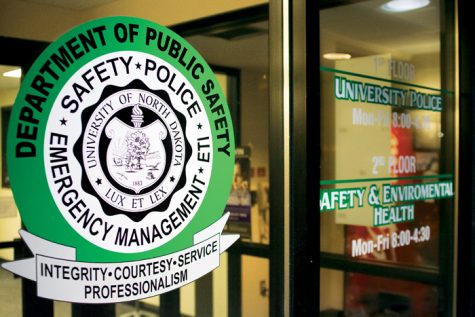Perscription drug monitoring increasing in ND
President Obama visited Charleston, W. Va., in late October to address the problem of prescription drug abuse and heroin use in the United States. In the White House’s press release accompanying the event, it was announced that in 2016 the National Association of Boards and Pharmacies will increase access to a national prescription drug monitoring program to pharmacists and physicians in North Dakota, along with several other states.
While the state hosting Obama last week has struggled with prescription drug abuse, North Dakota has one of the lowest prescription drug abuse rates in the nation.
North Dakota’s mortality rate due to drug overdose has remained relatively low despite a large trend upward in prescription drug abuse across the country over the past decade. In a study released by the nonprofit Trust for American’s Health in Oct. 2013, North Dakota had the lowest rate of fatalities due to drug overdose in the entire nation with a rate of 3.4 deaths per 100,000 people in 2010. This number decreased to just 2.6 deaths per 100,000 people in the Trust’s 2015 report.
However, some developments has given cause for concern. In October of 2013, Williams County in the Bakken region of North Dakota was designated by the federal government as a High Intensity Drug Trafficking Area. This has enabled the area to access federal resources and funding to help combat drug trafficking.
Additionally, according to a report by the state attorney general’s office, prescription drug abuse and drug trafficking has risen in North Dakota over the past several years. Total drug-related violations have increased from 2,791 in 2010 to 5,154 in 2014, which amounts to a 85 percent increase. However, most of the increase in violations in 2014 were due to marijuana or amphetamines/methamphetamines.
According to UND Health and Wellness, 95.5 percent of UND students do not abuse prescription painkillers.
The state has taken several proactive steps over the past decade to combat prescription drug abuse. North Dakota established a Prescription Drug Monitoring Program in 2005. This program is designed to help address prescription drug abuse in North Dakota by increasing coordination between local, state and federal agencies. According to the program’s website, it assists in the early identification individuals who may be involved in prescription drug abuse and helps with educational and awareness efforts throughout the state.
The state launched a prescription drug take back program in 2009. In addition to specifically designated days for people to voluntarily turn in their unwanted prescription drugs, North Dakota is the only state in the country that has a year-round prescription drug disposal program. This disposal program is administered by local sheriff and police departments in their respective counties.
According to the ND state attorney general’s website, over 9,497 lbs of prescription drugs have been collected and destroyed by the state as of March 2015. On Sept. 26, the federal Drug Enforcement Agency coordinated a nationwide National Prescription Drug Take-Back Day in conjunction with state and local law enforcement agencies. According to a CBS Minnesota Report, 1,495 pounds of unwanted prescription drugs were turned over in North Dakota that day.
Hydrocodone, Oxycodone, Oxymorphone and Methadone are the most common prescription drugs associated with overdose deaths, according to the Centers for Disease Control. Along with the potential for overdose, prescription drug abuse can result in many adverse health effects, including long term damage to vital organs, depression, and high blood pressure.
This past legislative session, the North Dakota legislature passed a bill that gives individuals immunity from criminal prosecution if they notify law enforcement during an emergency situation involving drug overdose. These “Good Samaritan” laws are seen as beneficial in helping those who may have overdosed because it protects the people who assist them from being criminally charged if they contact law enforcement for help.
Additionally, the legislature also passed a law that allows people to use Naloxone to help those who have overdosed on opiates, like painkillers or heroin, without fear of criminal prosecution. Naloxone, also known as Narcan, is a prescription drug that is commonly used by emergency responders to treat a opiates overdose, but absent a law that protects people from administering it to someone who has overdosed, people are less likely to use it to assist someone who has overdosed.
Both these recent changes to North Dakota’s laws are designed to combat prescription drug abuse and the negative impacts it can have on people and communities. For more information about the dangers surrounding presciption drug abuse, please visit www.und.edu/health-wellness.
Sean Cleary is the news editor for The Dakota Student. He can be reached at sean.d.cleay@my.und.edu







